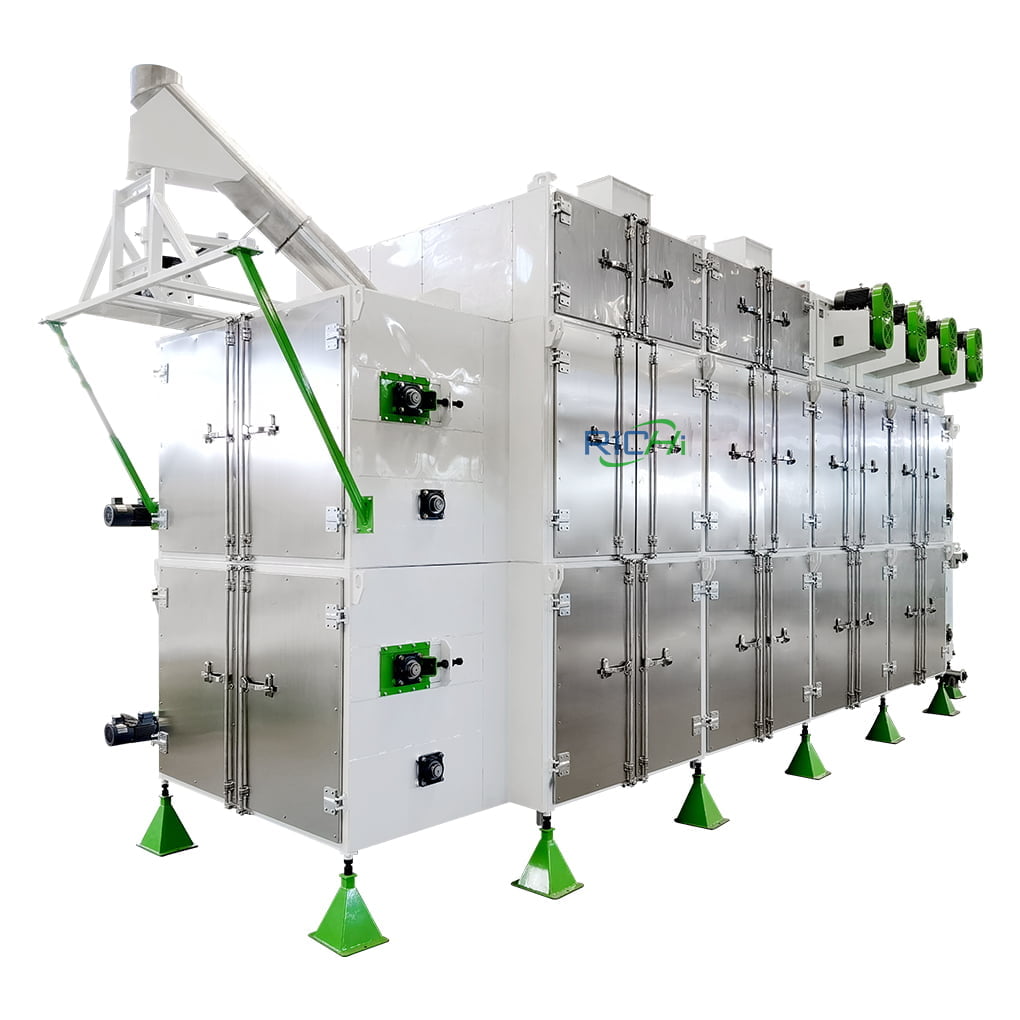
Pet Food Production Line Price
1-60 T/H pet food production line price ranges from 50,000 – 5,000,000 USD. This pet food line cost refers to the price of a complete set of pet food processing equipment (excluding silos), covering various simple, medium and high configuration plans and configurations.
According to the needs of each customer, we will provide customers with customized pet food technology solutions, and the production line scale, output, pet food type, process plan, and equipment selection will ultimately affect the cost of the pet food production line.

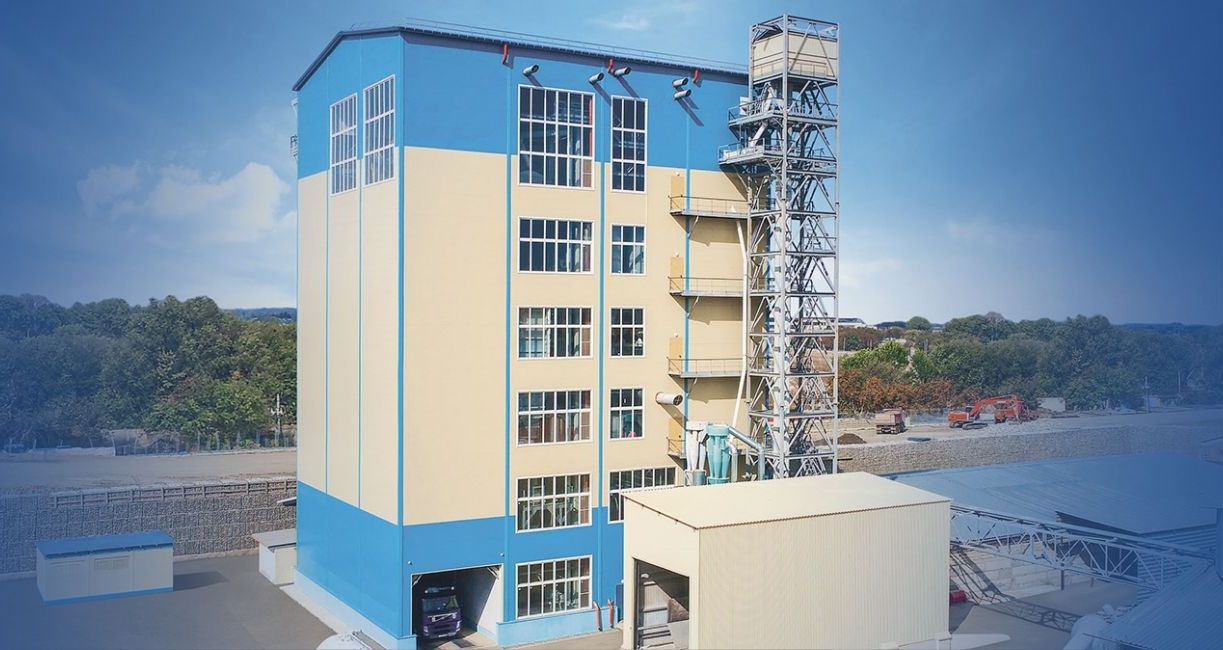
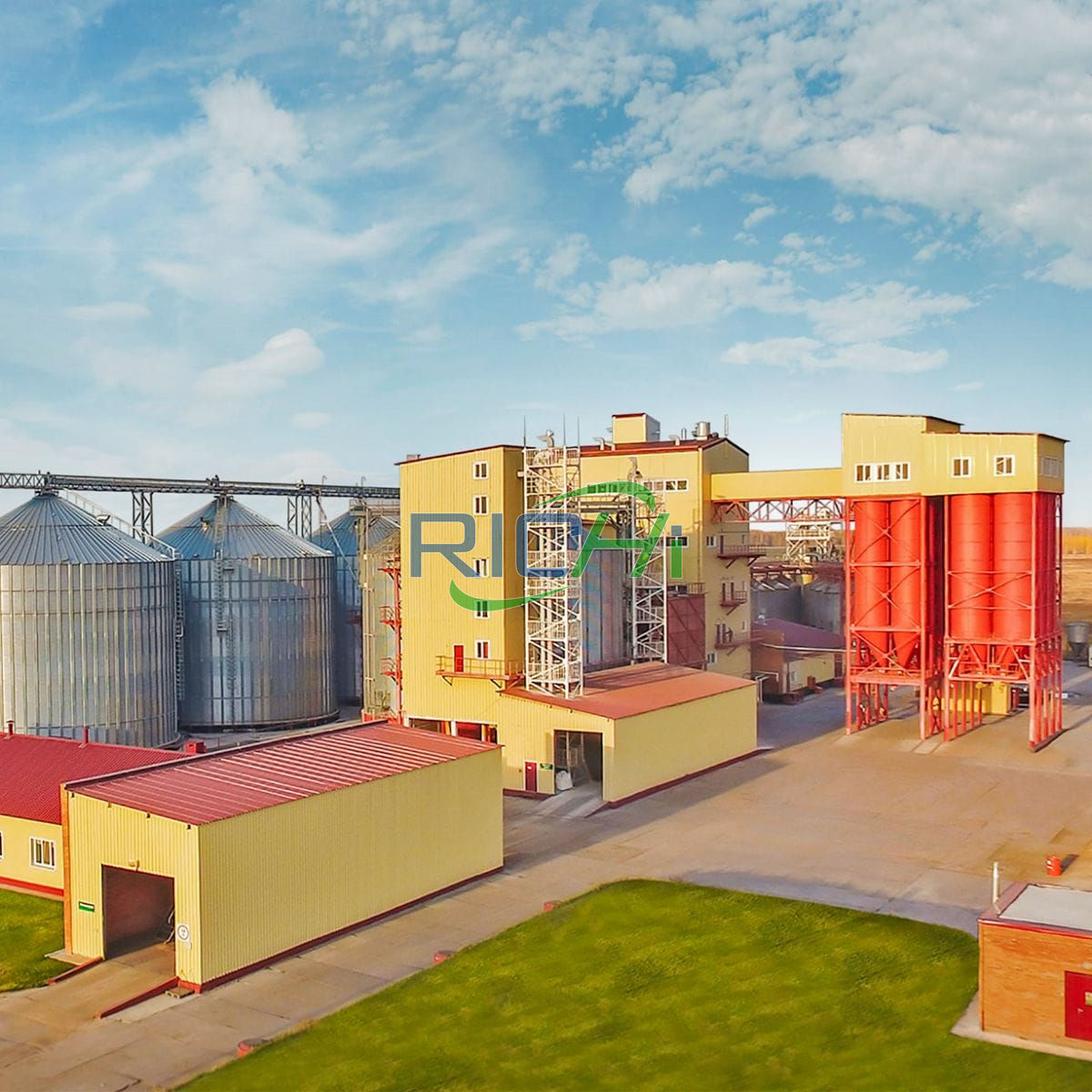
With the rapid development of the pet industry and the deepening of people’s affection for pets, people’s demand for high-quality pet food that is green, safe, and nutritious is increasing day by day.
RICHI Machinery, one of the industry’s leading pet food equipment and engineering system service providers, constantly pursues excellence and is committed to creating stable and reliable pet food equipment and engineering with world-class standards for customers, and meeting customer formulas with efficient and accurate solutions.
The pet feed production line we provide to our customers can fully meet the higher needs of consumers and the market. The processed products are optimized in multiple dimensions such as quality, taste, nutrition, etc., to achieve upgrading and innovation of our own products, enhance brand advantages, and leverage our strength Help pet food companies improve product competitiveness.
Currently, our pet feed production lines have been exported to Russia, Kazakhstan, India, Thailand, Malaysia, New Zealand, South Africa, Iran, Ghana, Tanzania, Argentina, Brazil and other countries.
- Capacity: 1-60T/H
- Business Scope: New construction, reconstruction and expansion of pet feed production lines for dogs, cats, ornamental fish, etc.
- Applicable customers: pet feed factories, fish feed factories, animal feed mill plants, pet supplies companies, etc.
Composition of pet food production line price
Pet food production line price and budget is hugely important. When planning your pet food production line, you have to think about the operational costs, machinery maintenance, product waste management and other expenses. Will your production line reward the investment with worthwhile, sustainable profits ?
Calculation of pet food line investment costs is an important step in evaluating production line investment benefits. Generally speaking, pet food production line price include equipment purchase costs, installation and commissioning costs, operation and maintenance costs, and labor costs.
- Equipment purchase costs are usually determined based on factors such as pet food equipment model, performance, and manufacturer. When selecting pet food manufacturing equipment, you need to weigh the equipment’s production efficiency, quality stability, and ease of maintenance. In addition, the cost of equipment spare parts and after-sales service also needs to be considered.
- Installation and debugging costs usually include site preparation, pet feed mill equipment installation, system debugging, etc. This needs to take into account various problems that may arise during the installation and debugging process, such as equipment size inconsistency, poor installation environment, etc., so a certain budget needs to be reserved.
- Operation and maintenance expenses include daily maintenance, maintenance, repair and other expenses for equipment. This part of the cost is related to factors such as the service life and frequency of use of the pet food making equipment. In order to reduce operation and maintenance costs, it is necessary to select equipment with stable quality and establish a complete maintenance system.
- Labor costs are an important part of the pet food production line price. Depending on the degree of automation and production scale of the pet feed production line, a certain number of operators, technicians and managers need to be deployed. When calculating labor costs, employee wages, benefits, training and other expenses need to be considered.
To sum up, the calculation of pet food production line price requires comprehensive consideration of multiple factors, including equipment purchase costs, installation and commissioning costs, operation and maintenance costs and labor costs, civil construction costs, water and electricity costs, etc.
In order to reduce investment costs and improve investment benefits, detailed planning and evaluation are required in the early stages of the pet food processing line construction.
Different scale, different pet food production line price
For different outputs, we can provide global customers with a variety of options such as simple configuration, high configuration, automated configuration and semi-automatic configuration. Depending on the customer’s production scale, issues such as silo systems, palletizing systems, and equipment selection also need to be considered. Correspondingly, these different process designs and equipment configurations will ultimately affect pet food production line price.

- 1-2 T/H pet food production line price: 50,000-400,000USD
- 2-3 T/H pet food line price: 100,000-600,000 USD
- 3-4 T/H pet food processing line price: 150,000-800,000 USD
- 4-5 T/H pet food production line price: 200,000-900,000 USD
- 6-7 T/H pet food production line price: 250,000-1,00,000 USD
- 8-10 T/H pet feed production line price: 280,000-1,100,000USD
- 10-12 T/H pet food production line price: 300,000-1,200,000USD
- 12-15 T/H pet food line price: 350,000-1,300,000 USD
- 15-18 T/H pet food production line price: 380,000-1,400,000 USD
- 18-20 T/H pet food production line price: 400,000-1,500,000 USD
- …
Want to learn more about RICHI pet food production line price? Or about applications, specifications and even more advantages, among other things. Contact us directly to get production line details.
Different project, different pet food production line price
We have done more than 50 pet feed processing line projects, but the prices of these production lines are all different. Because these feed production lines differ in various aspects such as output, scale, raw materials, formulas, process plans, equipment selection, degree of automation, and silo systems.
The following are examples of individual projects. If you want to know more about our pet feed mill projects, contact us for more information!
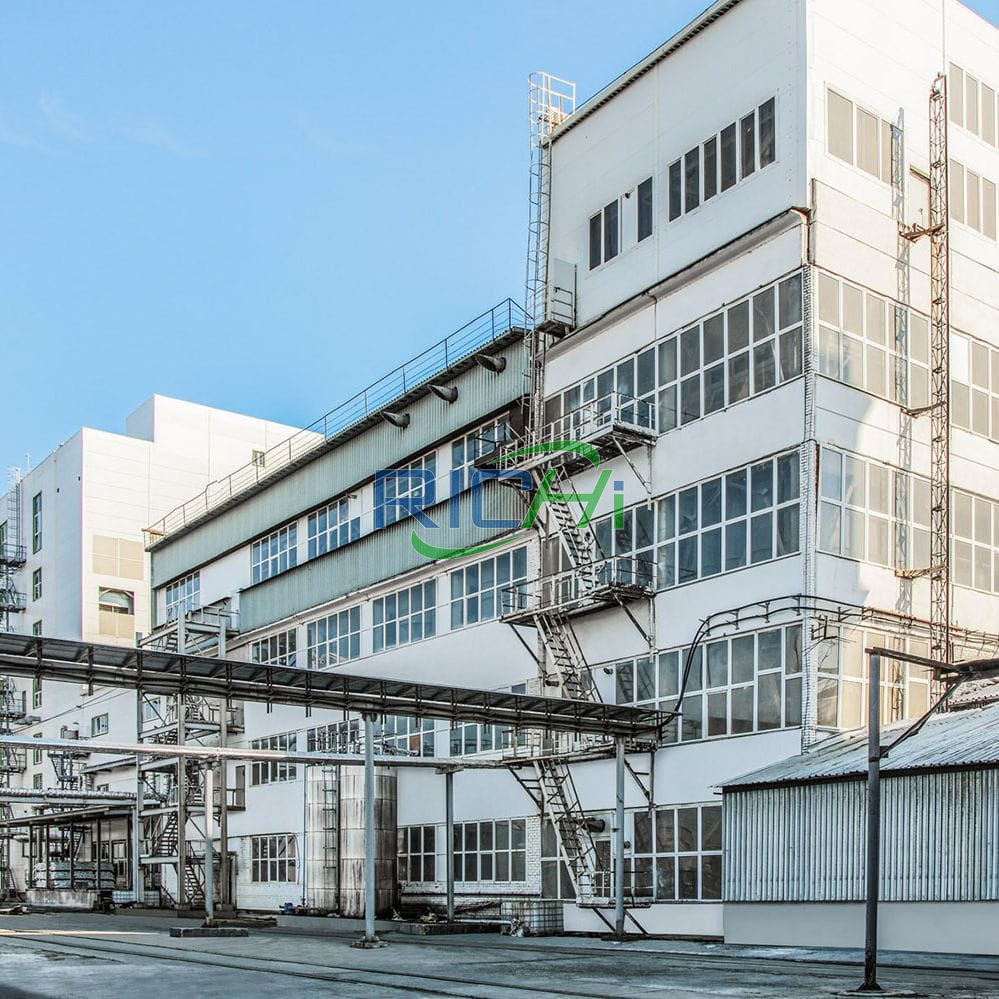
10 T/H pet food production line in Russia
- date: 2020.09.03
- Feed Type: Pet & Aqua Feed
- Equipped with silo system
- cost: 880,000 USD

5 T/H pet feed production line in Canada
- date: 2021.9.27
- Feed Type: Dog & Cat Food
- No silo system configured
- cost: 570,000 USD

2 T/H dry pet food production line in iran
- date: 2020.10.11
- Feed Type: Dog & Cat & fish Food
- No silo system configured
- cost: 240,000 USD

8 T/H pet food line in united states
- date: 2020.06.15
- Feed Type: Various pet food
- No silo system configured
- cost: 630,000 USD

6 T/H pet food processing line in australia
- date: 2023.06.11
- Feed Type: Pet & Fish Feed
- Equipped with silo system
- Price: 910,000 USD

4-5 T/H pet feed production line in india
- date: 2020.07.28
- Feed Type: Pet & Aqua Feed
- Equipped with silo system
- Price: 620,000 USD

3.5-5 T/H Pet food production line in thailand
- date: 2019.05.07
- Feed Type: Dog & Cat & Fish Food
- Equipped with silo system
- price: 590,000 USD

3 T/H pet food production line in singapore
- date: 2022.07.12
- Feed Type: Dog & Cat Food
- Equipped with silo system
- price: 320,000 USD
With more than 50 state-of-the-art pet food production lines in all parts of the world, you’d think RICHI was a technology company. Of course we deliver robust technology, but to do so successfully, collaboration and interfacing are our true core competencies.
This means that for large-scale pet food manufacturers, we build and deliver exactly as required, while for others, we provide tailored advice and help in finding the best solution in their specific situation. This can be advice in plant layout, recipes, pet food production line price or interfaces with other brands’ equipment. The main focus is to come up with a solution that fits together seamlessly. We work with various suppliers at the customer’s site to do this.
Different production needs, different pet food production line price
Every project is different. These differences are mainly reflected in the process, equipment and final pet food production line price.
Below RICHI will list some detailed project information, including pet feed production line price, plant area, process design, raw material consumption, energy consumption, number of employees, work system, etc. I hope it will be helpful to you.

2-3T/H pet food production line
—— RICHI MACHINERY ——
- Annual output: 20,000 tons
- Pet food production line price: 210,000 USD
- Project area: 2800 m²
- Construction content: workshops, finished product warehouses, raw material warehouses, office and living complex buildings, etc.
- Number of employees & work system: The labor quota is 30 people, and a two-shift system is implemented, with each shift working 12 hours, and the working day is 300 days a year.
- Raw material consumption: 10,000 tons of corn, 4,000 tons of wheat middlings, 2,000 tons of wheat bran, 2,000 tons of chicken meal, 2,000 tons of beef bone meal, 100 tons of chicken liver (used for meat pulp production)
- Main equipment: puffing machine, pulverizer, drying box, oil mixing tank, mixing mixer, vibrating screen, reaction kettle, frozen meat crusher, etc.
2-3T/H pet food production line Process flow introduction:
- First put the purchased raw materials corn, wheat middlings, wheat bran and other ingredients into the mixer according to a certain proportion and stir them, and then enter the crusher for crushing. The crushed material is added with water and enters the puffing process. The material is suddenly decompressed when heated and pressurized (using electricity). The water in the material vaporizes and expands, resulting in many small holes and becoming brittle, forming puffed feed.
- After the material is extruded by the extruder, it is dried in an electric oven to remove most of the moisture in the material.
- After drying, the particles enter the cooler for cooling, and then enter the mixing tank to add chicken oil and meat slurry for mixing. The oil-mixed material enters the cooler to cool to normal temperature, stirs in the mixer to disperse the material, and then sieves out through the vibrating screen Qualified products are packaged and put into storage for sale (the transportation process is all pressure transportation).

3-4T/H pet food production line
—— RICHI MACHINERY ——
- Annual output: 20,000 tons
- Pet food production line price: 460,000 USD
- Project area: 930 m²
- Construction content: production plant, office area, dormitory building, storage and transportation (for temporary storage of raw materials and products)
- Number of employees & working system: The maximum number of employees is 30, the working hours are 320 days a year, two shifts are adopted, each shift is 9 hours, and the annual working hours are 5760 hours.
- Raw material consumption: corn 7000, wheat 4600, rice 1600, meat meal 1200, fish meal 800, oil and fat 2024, soybean meal 2000, auxiliary materials 800
- Energy consumption: water 6344.66m3/a, electricity 800,000KW/h, gas 936,600m3/a
- Main equipment: cylindrical primary cleaning screen, permanent magnet cylinder, single-shaft double-layer blade high-efficiency mixer, batching bin, waiting bin, hammer mill, waiting bin, twin-screw extruder, belt dryer, Weighing warehouse to be sprayed, spraying machine, counterflow cooler, finished product warehouse, buffer warehouse, liquid addition system, oil tank, quantitative packaging scale, corn and wheat silo, single-layer cylinder cleaning screen, vibrating screen, gas steam boiler, etc.
3-4T/H pet food production line Process Description:
- Raw materials such as corn, wheat and purchased rice temporarily stored in the silo are fed into the silo and then enter the next process. The feeding port is equipped with a cylindrical primary cleaning screen and a permanent magnetic cylinder to screen out impurities in the grain. The materials are accurately configured according to the scientific formula through microcomputer and weighing, and then enter the double-blade mixer. The mixed raw materials enter the chamber to be crushed and then transported to the crusher.
- Meat meal, fish meal and other auxiliary materials are put into the mixer through the feeding screen according to the scientific formula and enter the pre-mixing. After mixing evenly, in order to facilitate the use in the production line, quantitative packaging is carried out through a microcomputer-controlled quantitative packaging scale.
- Use a double-blade mixer to mix the crushed grain raw materials and meat powder and other auxiliary materials for the second time. The second mixing process is equipped with a permanent magnet cylinder to screen out iron impurities in the raw materials.
- The raw materials after the second mixing enter the warehouse to be expanded through a closed pipeline, and then enter the twin-screw extruder for expansion through the warehouse to be expanded.
- The expanded material is transported to the dryer through the sacron. The dried materials need to be cooled from high temperature to close to room temperature, and part of the moisture can be taken away. Air cooling is used for cooling.
- The material after cooling for the first time enters the warehouse to be sprayed. After expansion, the material becomes large particles, and then enters the spraying process, where a layer of animal oil and meat powder is sprayed on the surface of the cooled product. The sprayed material needs to be cooled again using a fan.
- The main purpose of the second screening is to screen out the powder and agglomerated particles attached to the formed dry pet food. At the same time, in order to prevent the pet food from containing metal impurities, metal detection is required. Manual inspection is required after metal detection. After inspection, the finished product is packaged and put into storage for sale.

500 kg/h small pet food production line
—— RICHI MACHINERY ——
- Annual output: 1500 tons
- Pet food production line price: 60,000 USD
- Project area: 984m²
- Construction content: 1 one-story industrial factory building, warehouse and other areas
- Number of employees & work system: Capacity: 7 people, 250 working days per year, 1 shift, 12 hours a day.
- Raw material consumption: flour 400t/a, wheat middlings 40t/a, soybean meal 420t/a, wheat bran 90t/a, phospholipid powder 60t/a, rice 25t/a, fish meal 300t/a, yeast 20t/a, chicken meal 30t/a a. Calcium dihydrogen 30t/a, stone powder 25t/a, choline 4t/a, sugar 2t/a, meat and bone meal 4t/a, fish meal 4t/a, soybean oil 7t/a, chicken fat 5t/a
- Main equipment: mixer, spiral feeder, electronic batching scale, rotary distributor, permanent magnet cylinder, granulator, screw conveyor, horizontal ribbon mixing, extruder, grading screen, bucket elevator, electronic scale , computer automatic batching system, ultra-fine grinder, dryer, cooler, fuel injection machine, primary cleaning screen, vibrating screen, sewing machine, vacuum packaging machine, plastic bag sealing machine, automatic weighing and packaging machine, air compressor, etc.
500 kg/h small pet food production line Process:
- First, flour, soybean meal, chicken meal, rice, wheat middlings, additives, etc. are manually put into the feeding port, and transported to the silo and barrel in a closed pipeline through a bucket elevator and screw conveyor. The raw materials will be processed according to the feed formula. Mix once and then transport it through a closed pipeline to an ultra-fine grinder for crushing.
- Various raw materials are crushed into fine granular mixtures, which are then transported to the barrel through closed pipelines and mixed for the second time. After being sealed and screened through a graded square screen, wet extrusion and puffing can be carried out (temperature is about 105°C). Made into granular semi-finished products.
- The semi-finished products are transported to the oven through bucket lifts for drying (temperature is about 125°C), and then transported to the cooling equipment after drying.
- Considering from the perspective of nutritional formula, some products need to add oil. At the same time, oil injection can ensure that the feed particles are uniform and complete. The normal temperature and closed oil injection process through the oil injection machine does not produce waste gas. After oil injection, it is transported to the drying and cooling equipment through a spiral, and then After screening, the finished feed products are packaged and put into storage.

400 kg/h small pet food production line
—— RICHI MACHINERY ——
- Annual output: 1,000 tons (200 tons of pet dog feed, 800 tons of fish feed)
- Pet food production line price: 54,000 USD
- Project area: 500 m²
- Construction content: production workshop, finished product warehouse, raw material warehouse
- Number of employees & work system: The pet food line has a labor quota of 20 people, all of whom are nearby residents. They do not have room and board in the factory. They work 8 hours a day and 300 days a year.
- Raw material consumption: sorghum flour 180, bran 250, soybean meal 85, soybean flour 85, corn flour t/a 120, flour 80, rice bran 120, grain protein 40, cassava flour 40, additive 0.5
- Energy consumption: electricity 1.2 million kwh/a, water 600m3/a
- Main equipment: mixer, mixer, dryer, pulverizer, electronic scale, etc.
400 kg/h pet food production line Process Description:
The project is to rent an existing workshop to produce feed. The construction period mainly includes the installation of some equipment, and the cycle is short. The main products are pet dog feed and fish feed, with an annual output of 1,000 tons. The two feed production processes are the same, but the raw material ratios are different.
Put various raw materials into a mixer in proportion and add water to mix. After mixing evenly, put it into a tray to proof for about 1 hour. Cut it into long strips and put it into the dryer conveyor belt. After drying, lift it to the silo of the crusher and crush it into uniform granules. , bagged and stored according to specifications.
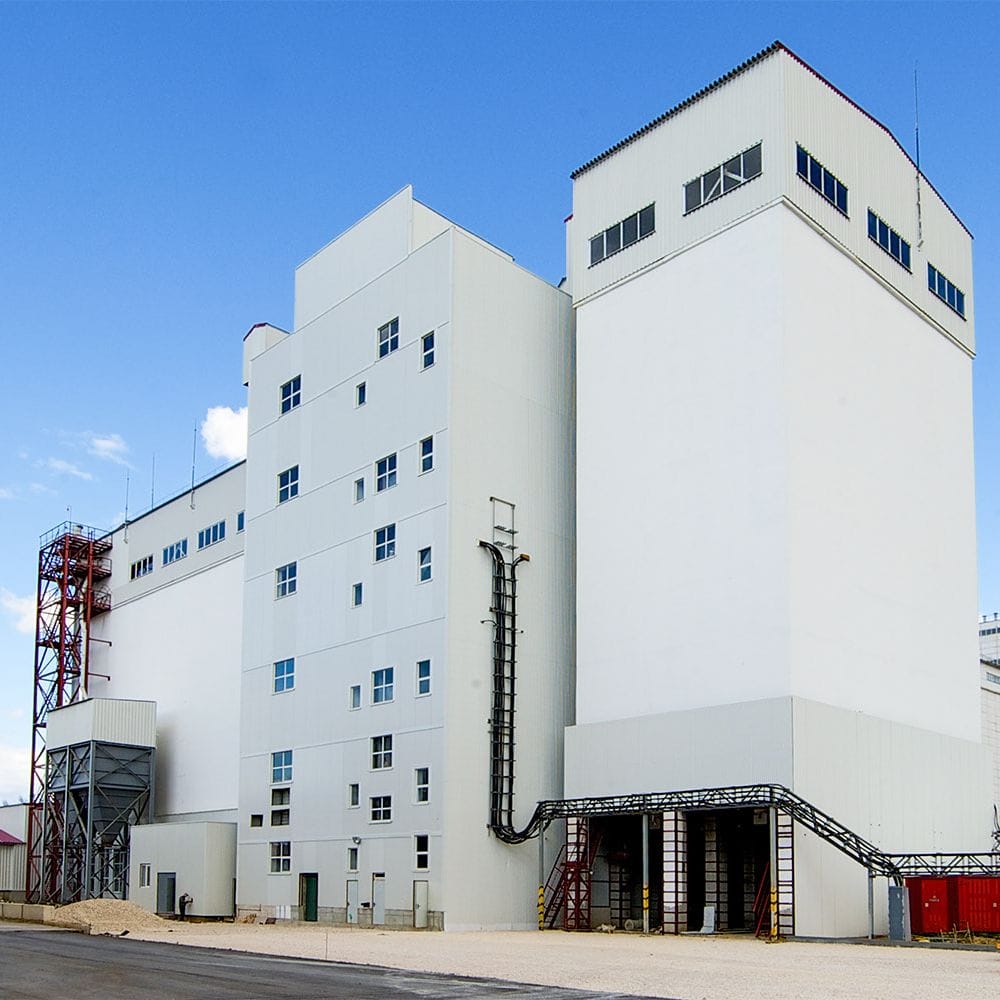
13-15T/H pet food production line
—— RICHI MACHINERY ——
- Annual output: 45,000 tons
- Pet food production line price: 980,000 USD
- Project area: 1750m²
- Construction content: Mainly including production workshops, offices, warehouses, etc.
- Number of employees & work system: 40 employees, a 10-hour work shift, and 330 working days per year
- Raw material consumption: corn 6000, wheat 3500, wheat middlings 3000, dehydrated meat powder 3500, egg powder 6500, vegetable oil 1300, animal oil 700, premix 5500,
- Energy consumption: natural gas 198,000 m3
- Main equipment: mixer, natural gas steam boiler, pulse bag dust collector, hopper, bucket elevator, distributor, batching warehouse group, batching screw conveyor, electronic scale bucket, pneumatic discharge door, double-shaft mixer, Permanent magnet cylinder, feeder, crusher, inspection screen, scraper, single-shaft mixer, extruder, impeller feeder, air transport system, drying box, cooler, fan, rotary screen, finished product warehouse, Quantitative packaging scales, distribution cabinets, natural gas boilers, grease adding systems, etc.
13-15T/H pet food production line process flow:
- After impurities are removed from the raw materials required for production, they are fed, crushed, and different ingredients are mixed according to a certain proportion.
- The mixed ingredients are sent to the puffing machine through the feeding machine. Animal oil and flavoring agents are added during the puffing process. The purchased animal oil is heated to about 60°C and sent to the puffing machine, where it is turned into puffed granules.
- After the material is extruded by the extruder, it forms wet and soft particles (moisture content is 25% to 30%). In order to reduce the breakage of the particles, it is advisable to use pneumatic transportation and enter the dryer for drying, so that the moisture content of the material is reduced to 13%. about.
- After Pellets are dried, they enter the external spraying system. By coating the surface of the pellet feed with oils, vitamins, flavorings, etc., it can not only meet the energy needs of pets and reduce the loss of nutrients during processing, but also It can improve the palatability of feed and reduce the powder content. After the materials are seasoned, they need to be cooled and crushed.
- The cooled pellets are lifted, crushed and entered into the grading screen for classification. The classification screen generally consists of two layers of sieves. The materials screened by the upper screen need to be returned to the crusher for crushing; the materials screened by the lower screen are generally fine powders, which can be returned to the expansion bin for re-forming; some of the materials screened by the lower screen need to be returned to the crusher for crushing. The finished products go directly into the finished product warehouse; some products with high requirements are mixed twice to make the pet feed more evenly mixed to improve the taste, and then weighed and packaged.
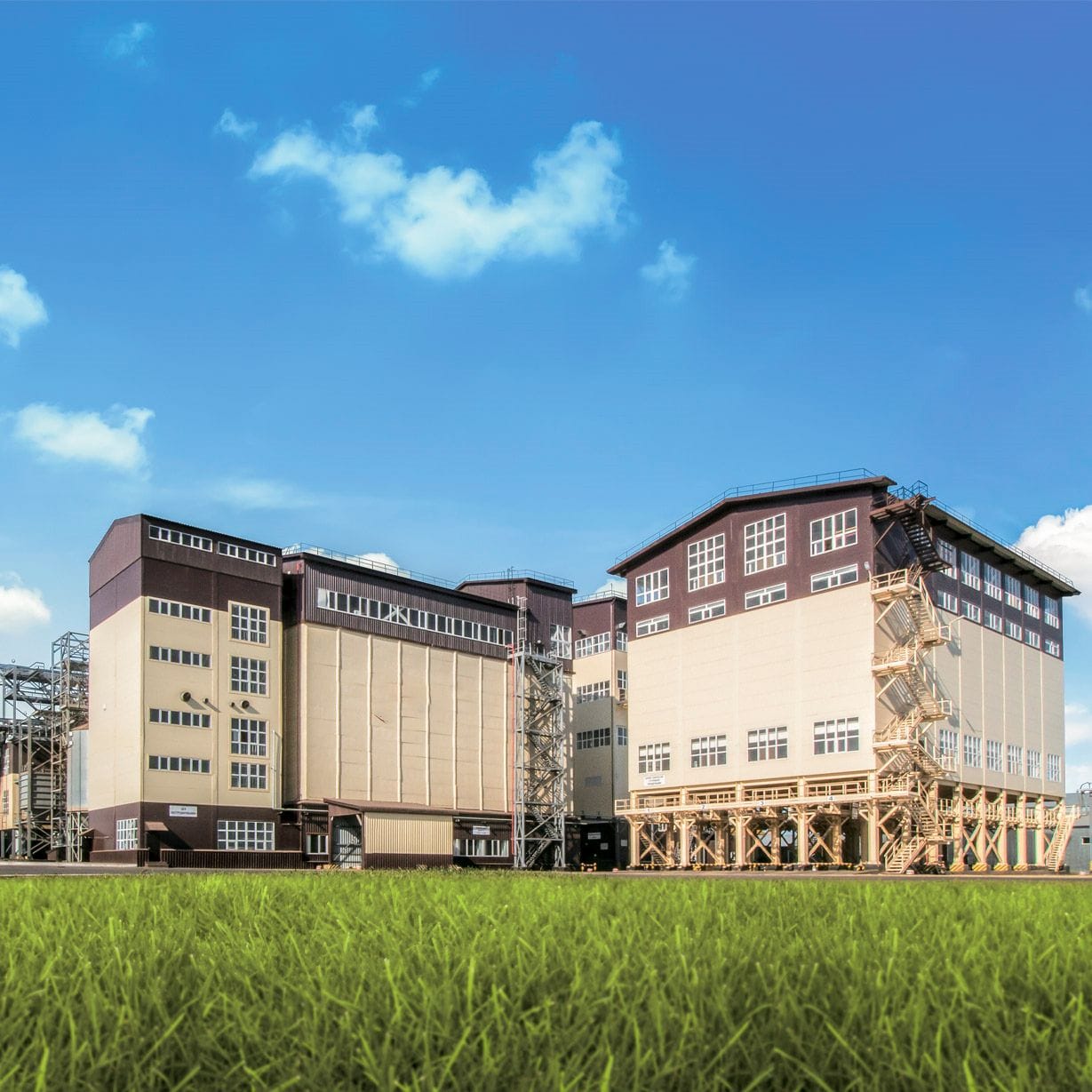
12T/H pet food production line
—— RICHI MACHINERY ——
- Annual output: 30,000 tons
- Pet food production line price: 1,500,000 USD
- Project area: 1340m²
- Construction content: New factory building to serve as pet feed production workshop (place a 5m3 fish oil tank in the workshop), packaging workshop, office and laboratory, cold storage (1 freezer 64m2, 1 cold storage 128m2)
- Number of employees & work system: 33 employees, works 300 days a year, one shift, 8 hours per shift.
- Raw material consumption: corn 3770t/a, broken rice 3770t/a, corn gluten meal 2770t/a, rice protein concentrate 1265t/a, fish meal 1265t/a, chicken meal 5465t/a, sugar beet meal 1170t/a, fresh chicken 1170t /a, oil (chicken oil, fish oil) 3770t/a, premix 974t/a, amino acid 365t/a, flavor t/a, 1265t/a, sodium hydroxide 3t/a.
- Main equipment: raw material receiving system, fresh meat pretreatment system, extruder, dryer, spraying system, finished product mixing line, liquid addition system, packaging system, compressed air system, boiler and steam system, testing equipment, office equipment, etc.
12T/H pet food production line Process flow:
- After feeding granular raw materials (corn, broken rice) and lump raw materials (beet pulp), they are screened and then crushed for the first time. After feeding powdery raw materials (corn gluten meal, rice protein concentrate, fish meal, chicken meal) filter.
- The raw materials are then mixed according to a certain proportion, added to the premix, mixed and then crushed for the second time.
- Then add a certain proportion of fresh chicken (which is crushed and pre-processed when purchased from outside) for conditioning, and then all the raw materials are put into the extruder for puffing. The puffing temperature is 110~130℃.
- Then dry in the dryer, the drying temperature is 80~90℃, and the drying uses direct combustion heating.
- The products are dried and then sieved, and then sprayed with oil, amino acids, and flavorants by spraying equipment. After being air-cooled, they enter the packaging system for packaging with required specifications.

5-6T/H pet food production line
—— RICHI MACHINERY ——
- Annual output: 20,000 tons
- Pet food production line price: 560,000 USD
- Project area: 1400m²
- Construction content: production workshop, office area and supporting buildings
- Number of employees & work system: The labor quota is 20 people. The pet food line adopts a one-shift system, with each shift working 12 hours and working 300 days a year.
- Raw material consumption: corn 11800t/a, wheat 1000t/a, rice 1000t/a, wheat middlings 1950t/a, chicken meal 1000t/a, wheat bran 1000t/a, beef meal 1000t/a, chicken fat 1000t/a, chicken Liver 130t/a, starch 100t/a, additive 0.5t/a
- Main equipment: crusher, extruder, dryer, mixer, bucket elevator, slicer, meat grinder, cooking pot, air dryer, air closer, screw machine, automatic silo, rotary screen, cleaning Machines, packaging machines, etc.
5-6T/H pet food production line Process flow:
- The purchased chicken liver is cut into small pieces by a slicer and then put into a cooking pot for cooking (steam heating). After cooking, the finished meat pulp is used for making pet feed.
- First put the purchased raw materials into the crusher according to a certain proportion for crushing, then add the auxiliary materials and mix evenly.
- The mixed material enters the puffing process. The material is suddenly decompressed when heated and pressurized. The moisture in the material vaporizes and expands, resulting in many small holes and becoming brittle, forming puffed feed.
- After the material is extruded by the pet food extruder, it is dried in an electric oven to remove most of the moisture in the material. The dried particles enter the oil mixing machine, and chicken oil is sprayed on the surface. The oil-mixed materials enter the cooler to be cooled to normal temperature, and are then packaged and stored in storage for sale.

9-10T/H pet food production line
—— RICHI MACHINERY ——
- Annual output: 80,000 tons (40,000 tons of cat food, 40,000 tons of dog food)
- Pet food production line price: 780,000 USD
- Project area: 2000m²
- Construction content: processing workshop (raw material area, production area and office area), packaging workshop (finished product area, packaging area and office area)
- Number of employees & work system: The labor quota is 20 people, and a three-shift work system is implemented, each shift works 8 hours, and the company works 350 days a year.
- Raw material consumption: corn 27000t/a, flour 13500t/a, rice 13500t/a, chicken meal 8000t/a, meat and bone meal 5000t/a, chicken liver meal 5000t/a, fish meal 8000t/a, bean dregs 2000t/a
- Energy consumption: annual electricity consumption is 1.5 million kWh, steam boiler natural gas consumption is 134.4m3/h
- Main equipment: steam boiler, pulse dust collector, mixer, pet food extruder, pulverizer, bucket elevator, cooling warehouse, packaging machine, batching machine, etc.
9-10T/H pet food production line Process flow overview:
- The raw materials are all bagged finished products, all purchased from outside. The raw materials are transported by sealed vehicles and directly put into the raw material warehouse after entering the factory.
- Manually put the raw materials into the crusher according to the proportion, and all the materials are crushed into powder that meets the requirements.
- The crushed materials are transported to the mixer through a closed pipeline, and fresh water is injected into the mixer according to the proportion. The materials and water are mixed evenly by the mixer.
- The uniformly mixed wet materials are transported from the closed elevator to the automatic feeder of the extruder. After being measured, they are transported to the expansion chamber of the extruder. The expansion chamber is indirectly provided with heat energy by the steam boiler. After the material enters the expansion chamber, the material is processed by high temperature and high pressure. Ripe, and produce materials that meet specifications by adjusting the gap between the cutter and the template.
- The expanded product has a high temperature and naturally falls by gravity to the cooling bin for air cooling. The material is evenly and fully cooled in the cooling bin, becomes solid, and further reduces moisture.
- The cooled products fall by gravity into the packaging machine for bagging and packaging. The packaged products are temporarily stored in the finished product area, waiting for external sales.
Empower your production with our visionary pet food line solutions. Secure your place in the automated future – contact RICHI Machinery to discuss your custom solution and pet food production line price.
Different Design, Different pet food production line price
To determine the price of a pet feed production line, we must first customize the pet feed production line’s process plan for you. Different designs, different pet food production line price. You want to know what the pet food production line price will be, and we want to know what we have to take into account.
Our engineers, in consultation with you and our sales engineers, look at requirements, assumptions, and choices. Based on this, they carry out the basic engineering, which makes it clear how product, process, and design of the installation interact and what the pet food production line prices are.
pet food production process description
The complete and standard pet feed production process is as follows:
- Raw material receiving and cleaning section:
The raw material feeding port has separate dust removal, which has good dust removal effect. It is also equipped with a preliminary cleaning screen and a permanent magnetic cylinder to remove large impurities and iron impurities in the raw materials. - First batching section:
This section is controlled by a batching program independently developed by RICHI to achieve precise feeding, fast batching speed and high precision. - First pre-mixing and crushing section:
A pet food mixer is used for pre-mixing to improve the uniformity of the materials before crushing; impurities are removed by a magnetic separation device before the raw materials of the crusher enter the warehouse to ensure the safe operation of the crusher. - Micron powder section:
It adopts the micro pulverizer or ultra-fine pulverizer independently developed by Liangyou Co., Ltd., with air-driven discharging, equipped with brake dragon and pulse dust collector, and the grinding fineness can be adjusted. - The second mixing section:
It adopts secondary ingredient mixing and is equipped with a small ingredient adding port. The mixing uniformity CV is less than or equal to 5%. - Extrusion section:
Adopt single-screw or twin-screw extruders independently developed by RICHI MACHINERY for pet food. Among them, the twin-screw extruder has an aspect ratio of up to 19.5:1, which makes the requirements for product formulas relatively loose and has wider adaptability. The adaptability of high-oil and high-protein formulas is much better than ordinary equipment. - Drying section:
It adopts a special dryer for pet food and imported brand PET woven mesh belt, which has high temperature resistance, small shrinkage and high air permeability. The parts in the drying box that are in contact with the material are all made of stainless steel, which is safe and hygienic. - Spraying section:
Spraying systems can be customized according to product requirements. For conventional grease spraying, a roller sprayer can be used with variable frequency continuous metering to achieve uniform grease spraying on the surface of the particles. Mixed powder spraying and grouting equipment can also be customized, and the weight-reduced silo can meet the proportion control of ingredients. - Packaging section:
Depending on the packaging of the final product, packaging scales with different measurement ranges can be selected, and auxiliary sealing equipment such as heat sealing machines, sealing machines, and folding machines can also be selected.
All the above work sections are modular and flexibly configured, which will all be determined according to customer needs. The following are the different design solutions we have made and the prices of these production lines:

5-6T/H pet food production line flow chart
- Cost:960,000 USD
- Product type: Dog & cat food

1-2 t/h pet food production line design
- Cost:350,000 USD
- Product type: Dog food

3-4 t/h pet food production line design
- Cost:600,000 USD
- Product type: Various pet food

5 t/h pet food production line design
- Cost:1,420,000 USD
- Product type: 5T/H pet food & 10 t/h poultry livestock feed
Based on the proven process and concept and the pre-engineering report, we are able to prepare an accurate pet food production line price for your working solution.
pet food production line equipment price
A pet food production line from RICHI Machinery has several advantages. Quality is always the first. Quality is extremely important. Our equipment for production lines are of solid quality and comply with all the rules associated with production. A production line must be reliable in all its functionalities and made of materials that can last a long time.
Let’s take a look at the main equipment and equipment prices of a pet feed production line.

pet Food Grinder
Price: 5,300-35,000 USD
Capacity:
3-25T/H
Main Power:
30-160KW
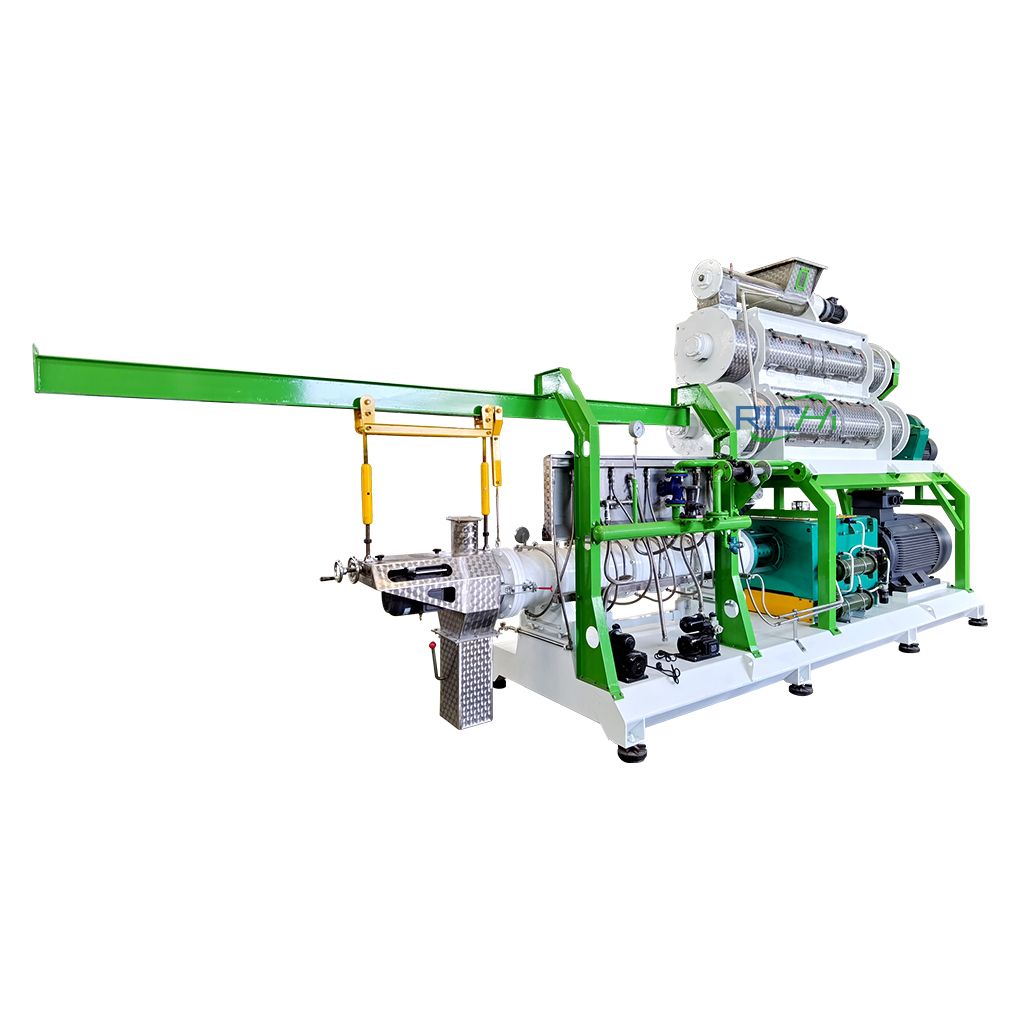
pet Food Extruder machine
Price: 70,000-200,000 USD
Capacity:
1-12T/H
Main Power:
0.75-355KW
Looking for more information about one of our products or have a question? If so, please contact us, to get pet food production line equipment price.
How to build a pet food production line?
The pet food production line price is the basis for planning to build a pet feed factory. If the budget has been determined, how to start a pet food processing line? Based on our rich experience in feed factory construction, below, we will list the construction process of pet feed production line in detail for you:
1. Preparation stage
- Conduct market research to determine the positioning and development direction of food processing plants
- Prepare pet food production line feasibility study report and market analysis report
- Determine the investment scale and funding sources
- Find suitable sites and land
2. Project establishment stage
- Fulfill relevant approval procedures, including environmental impact assessment, land approval, etc.
- Prepare proposals and reports
- Submit pet food production line applications to government departments and wait for approval
3. Design and Construction Phase
- Find pet food production line equipment manufacturers and carry out engineering design, including plant design, equipment selection, etc.
- Determine the construction plan and invite bids to select the construction unit
- Carry out construction work, including civil engineering, equipment installation, etc.
- Carry out equipment debugging and process trial production
- Complete project acceptance and obtain relevant approval documents
4. Trial operation and pet food production phase
- Conduct trial runs to test the stability and product quality of the production line
- Adjust and optimize based on trial run results
- Start formal production and establish quality control system
- Carry out production management and market operations
5. Later maintenance and development stage
- Establish a pet food safety management system to ensure product quality and safety
- Perform regular equipment maintenance and facility updates
- Continuously improve pet food production processes and product quality
- Carry out market expansion and product innovation to achieve sustainable development
The above is a brief introduction to the construction process of a pet feed processing plant. The specific implementation will depend on the specific circumstances of the project, and factors such as policies and regulations, market demand, and technical support need to be considered.
By thoroughly analyzing your needs, RICHI can tailor the pet food production line solution specifically to your needs. We can design and deliver a customized solution that meets your core goals, without any guesswork. This leads to cost savings and efficiency in implementing your new pet food production line system.
Talk to our sales team to learn more about pet food production line prices!
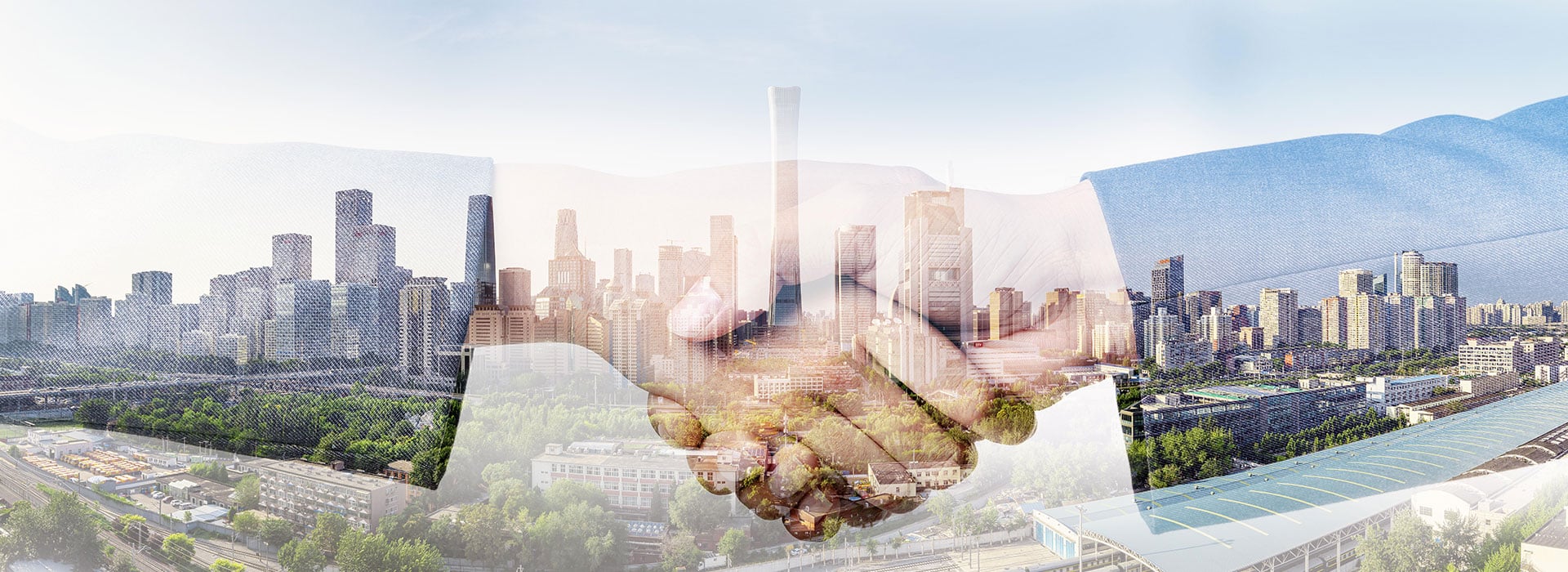
Start your pet feed production business, get pet food production line price
Pet food is food specially provided for pets. Its main function is to provide pets with the most basic nutrients needed for life guarantee, growth, development and health. It has comprehensive nutrition, high digestion and absorption rate, scientific formula, convenient feeding and can be Prevent certain diseases and other advantages.
Pet food is a rigid demand for raising pets, which runs through the entire life cycle of pets. It has the characteristics of high repurchase, low price sensitivity, and strong stickiness. The pet food market is the largest market segment in the pet industry and is also the first to benefit from the development of the pet economy.
RICHI designs and supplies process systems for the pet food industry. We offer an A to Z solution: our pet food production projects are completely handled by us from the design phase right through to the commissioning of the systems. We therefore have the disciplines of technology, automation, engineering, assembly, installation and after-sales completely in our own hands. This allows us to provide customized solutions as well as standard solutions.
Therefore, if you want to start a pet feed processing business, as long as you find us, you can get a complete set of customized pet feed production line price, and this price covers all your equipment investment.
Want to learn more? Call us at +86 138 3838 9622 or email [email protected].


